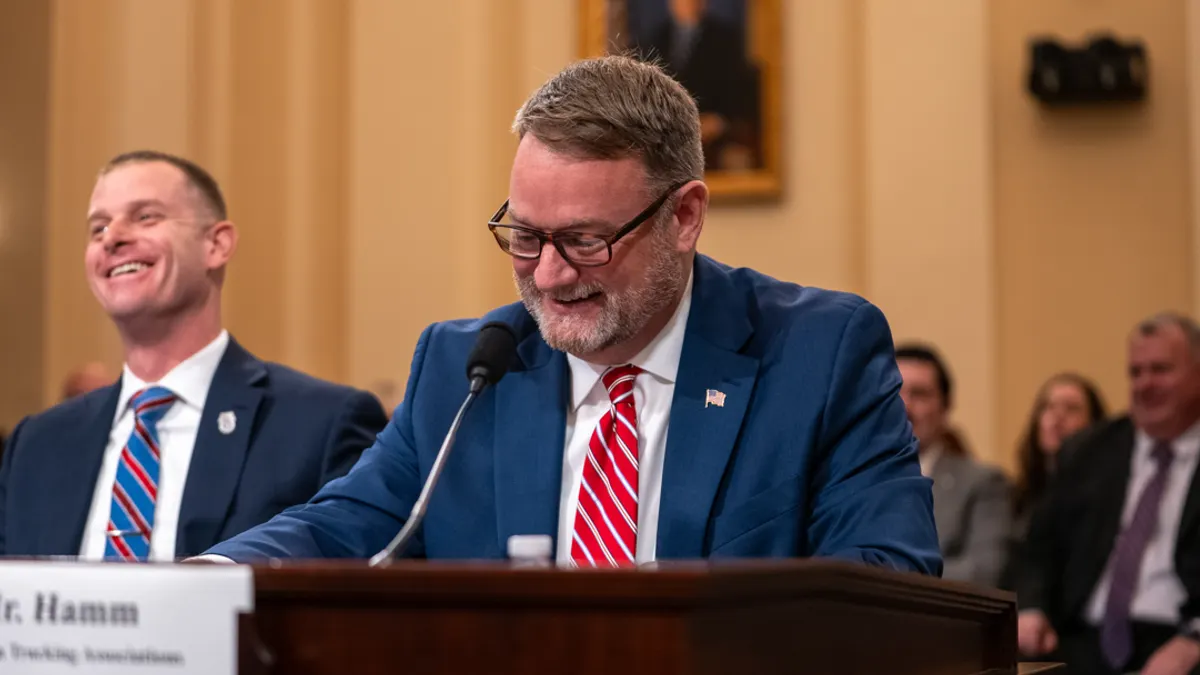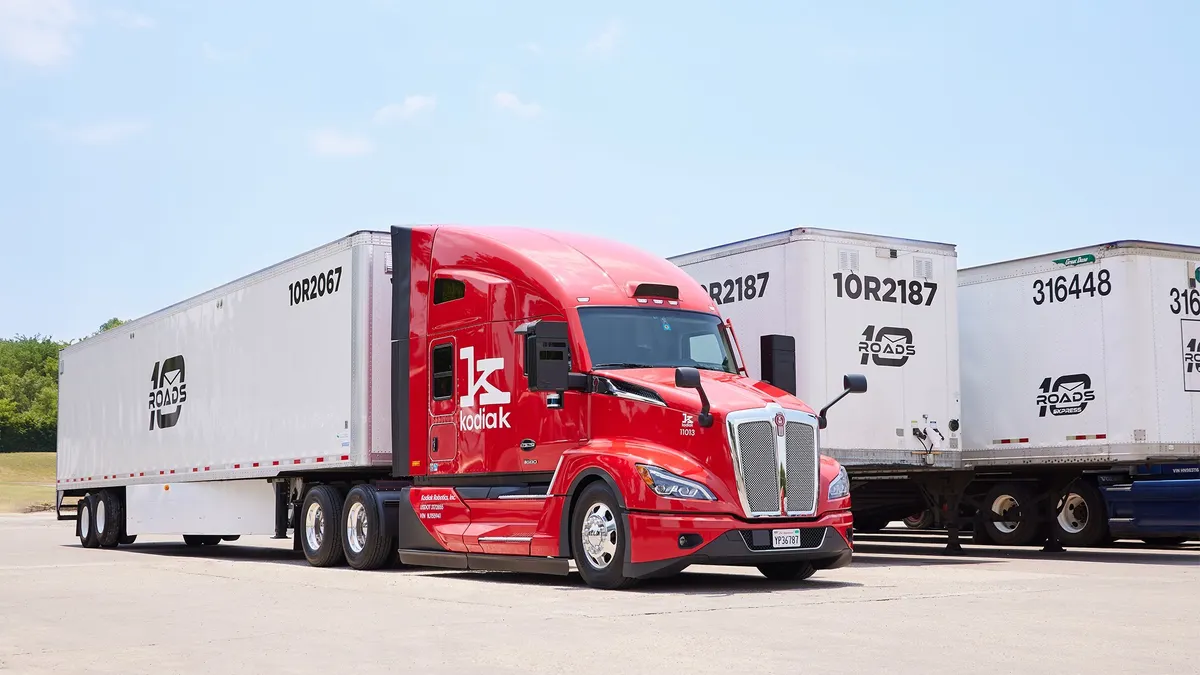As workplaces reopen, employers will need to devise plans that follow strong principles, according to Lydia Campbell, VP and chief medical officer at IBM Corporate Health and Safety. Such plans must also preserve flexibility, allowing employers to pivot when necessary.
But what are those principles? And how can employers enact a strong plan that protects flexibility, too? Transport Dive sister publication HR Dive spoke to Campbell and several other sources who recommended factors employers ought to consider as they draft return-to-work plans.
Federal, state and local guidance
Employers are likely seeing guidance come from multiple sources. As they sort through recommendations, they must remember to heed requirements and recommendations from federal, state and local entities, Denise Macik, client advocate at G&A, a HR outsourcing firm, said.
Guidelines are provided by federal agencies, such as the Centers for Disease Control and Prevention (CDC) and OSHA, the latter of which recommends masks be worn in the workplace. But guidelines are also distributed from state and local agencies. "You have to drill down based on the industry, the state, and then go back into the federal types of guidelines," she said.
The trucking industry should also be aware of international guidelines for operation. Canada, for example, is asking drivers crossing the border into the country to provide personal information at some checkpoints, as part of efforts to track the virus, according to news reports.
Timing
Not everyone needs to return to the office at the same time, Macik said. Employers will need to assess their workforces and determine "who is important and vital to get back into the workplace."
Once the first wave of returnees has been established, employers can move onto the next phase and decide which of the less-essential workers should next return and how.
Documentation
When FedEx Freight furloughed an undisclosed number of employees mid-April, the company said it would "continue to evaluate the environment and bring back furloughed employees as business circumstances allow." But when employers are returning workers whom they've furloughed or laid off, they need to proceed carefully.
"Do a documented return-to-work job offer, even if they were furloughed temporarily," Macik said.
Such agreements should include details about the job workers are returning to as well as their pay, even if it's widely assumed they're returning to the same position. "This is proof that you extended the offer, and that they expected to come back," she said.
Screening, testing and tracing
Preventing the contraction and spread of the virus means it is important to try to determine if and where it exists. While every employee does not need to be tested for the coronavirus, screening and symptom monitoring can help identify potential carriers. Employers must also be wary of the compliance risks of testing.
"Generally speaking, every plan, at the very least, needs an infection screening and recording method to comply with local health mandates in order to limit risk of the infection entering the workspace," Haniel Lynn, CEO of Kastle Systems, told HR Dive via email.
Testing and screening will also require documentation and some reporting capability. "To make this manageable and enforceable, you need an integrated system that: administers screening to occupants daily before they arrive (such as via a phone app), [and] records responses daily for each individual at the central occupant identity database, so it's easy to run reports for auditing purposes," Lynn said.
Additional documentation will involve proximity monitoring and tracking the use of physical spaces. Ideally, employers have a way to determine who else may be at risk after an employee tests positive, and notify them of the need to quarantine, go back to working from home or take other preventative measures.
"[Building access control systems] can also record physical presence of individuals should contact tracing be required when an infected individual is identified and can also keep track of occupancy status, to notify managers if too many people are in the space at once (to maintain social distancing)," Lynn said.
Active, empathetic leadership
As with any new policy or change, leadership needs to be present, open in its communications and willing to adapt based on employee feedback, Andi Britt, senior partner of talent and transformation at IBM Services, told HR Dive via email.
"One thing that shouldn't [change]... is the focus and attention business leaders put towards their people as organizations continue to establish a reopening and physical return to work plan," she said. "Now is the time to reintroduce more empathy and understanding into our policies and processes. Your employees will remember how you treat them when under pressure and how you listen to their concerns."
Campbell echoed this sentiment, noting that communicating in this way was among the most important of IBM's pandemic strategies. Communication began early and was based in fact — and messaging made clear what the employer knew and what it didn't, Campbell said. Additionally, communications crystallized that employee health and safety was a priority.
A recent report from Stay Metrics noted, "drivers who felt that their carrier takes a personal interest in their well-being also consistently reported stronger commitment to their carrier ... Drivers want to know about changes that will likely impact their earning potential in advance. Not doing so may result in drivers feeling as though their carrier is not considering their needs and success when making decisions."
Conversations should include how people work together, what roles entail, who need to be in the office and more, Britt said. "Rethink roles, workflows, teams, and new requirements to enable agility and flexibility for a different normal. Previously set ideas on which functions are 'essential' to operate in an office may not be the case anymore, or now with additional technology tools — certain roles can maintain the same level of effectiveness from home."
Additionally, under such new and challenging circumstances, business leaders can learn from teams that have thrived during the pandemic. "This could also mean pairing up less confident managers with digitally savvy employees for some reverse-mentoring to ensure the full team is benefiting from new technology-powered workflow," Britt said.

















